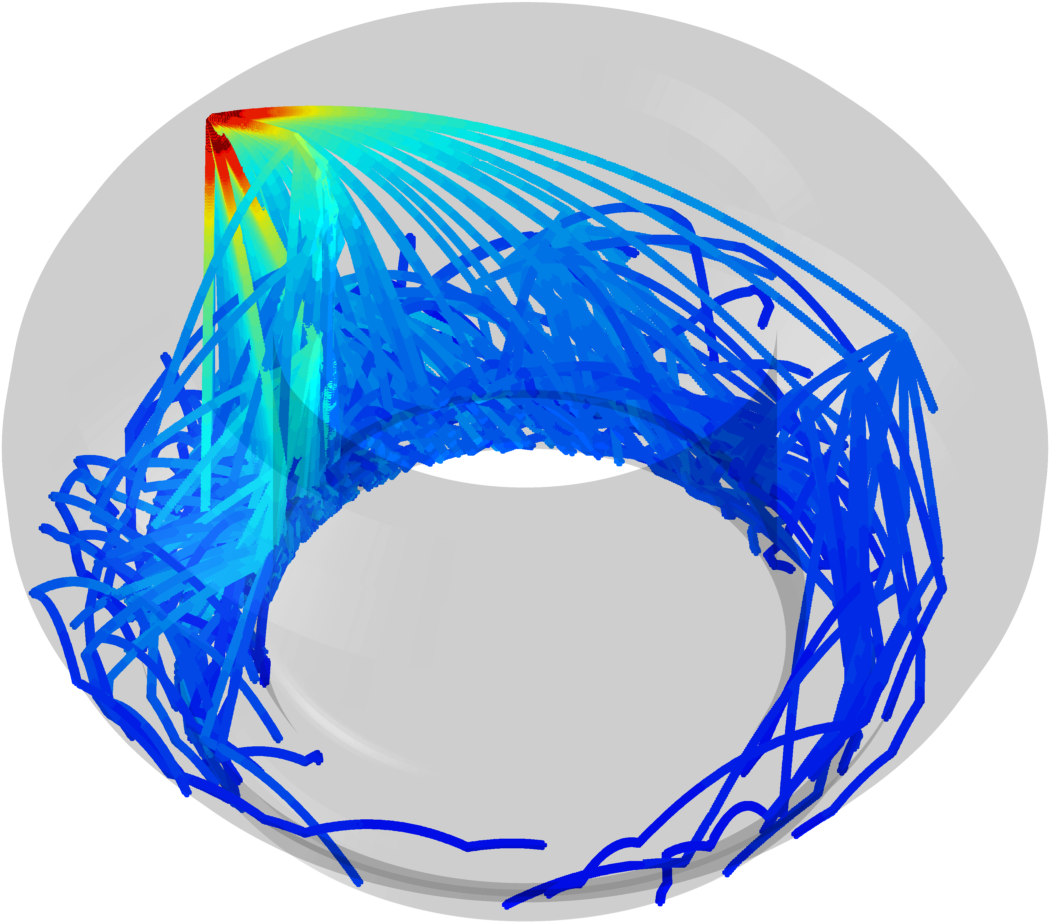Modelling of dust transport
The project aims at understanding and modelling the dynamics of metallic condensed matter (dust or droplets) micron-sized particulates in fusion reactors. Of particular practical interest are numerical predictions of high-Z impurity release due to dust vaporization, the location of dust accumulation sites, as well as the long-term evolution of the in-vessel dust inventory.
Dust grains of various sizes, shapes and chemical composition are unavoidably generated in magnetic confinement fusion devices as a result of the intense interaction between the scrape-off layer plasma and the plasma-facing components. Dust can be produced by continuous erosion and delamination of loosely bound material deposits that accumulate on the wall over the course of many discharges, or in an irregular manner by high-energy flux events (edge-localized modes, vertical displacement events, major disruptions, runaway electrons) which can induce large thermo-mechanical stresses, or even partial destruction, of the plasma-facing components. Once released into the plasma, dust gets heated and charged by the continuous absorption and emission of plasma particles and/or radiation.
Depending on its initial size and velocity, a dust grain can either completely vaporize into impurities or survive (with possibly reduced size) and re-deposit on the wall, wherefrom it may be remobilized during subsequent discharges. Both outcomes relate to specific reactor safety and operation issues. On the one hand, high-Z impurities released by vaporizing dust lead to enhanced radiative energy losses which can ultimately disrupt or extinguish the plasma. On the other hand, dust residing on the wall can absorb part of the tritium fuel of the fusion reactor, effectively becoming radioactive in the process. Moreover, dust residing on hot divertor surfaces is chemically active, providing a potential channel for explosive hydrogen production in case of accidental air or water ingress in the vessel.

The MIGRAINe dust dynamics code, developed and maintained by our group within the framework of the EUROfusion consortium, serves as the main numerical tool to model dust transport and dust survivability in fusion devices. MIGRAINe features different plasma collection models (OML, OML+, magnetized electron collection, thin sheath ions) of complementary applicability ranges. Moreover, MIGRAINe is the only dust dynamics code that encompasses all aspects of dust surface mechanical collisions featuring advanced analytical restitution coefficient models for adhesive elastic-perfectly plastic normal impacts and for frictional tangential impacts (calibrated with in-plasma experiments), probabilistic models for micron- and nano-scale roughness, interpolations on experimental results for the temperature and size dependences of mechanical properties. In addition, MIGRAINe implements state-of-the-art theoretical and semi-empirical models for all aspects of ion-solid and electron-solid interactions (ion backscattering, physical sputtering, field-assisted thermionic emission, secondary electron emission, electron backscattering, potential and kinetic ion-induced electron emission). Overall, MIGRAINe solves the coupled equations describing dust charging, heating and dynamics for a large number of particles that are launched with various initial conditions. The resulting predictions of the long-term dust inventory evolution (conversion into impurities, formation of accumulation sites) constitute a crucial input to the design and operation of future nuclear reactors.

Funding agency: VR 2015-04732 , Horizon 2020 EUROfusion Consortium 633053, Horizon Europe 101052200 EUROfusion
